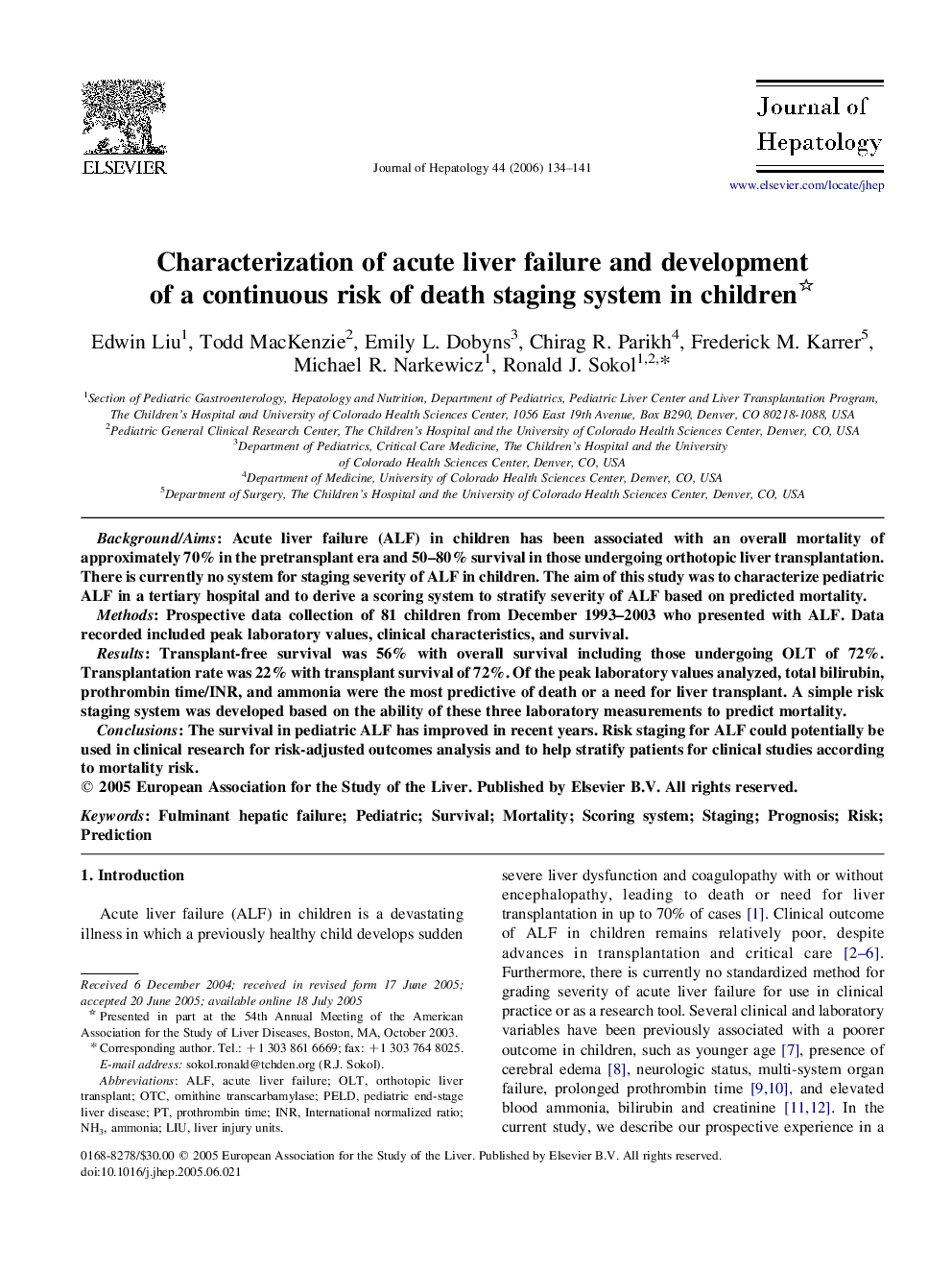| Article ID | Journal | Published Year | Pages | File Type |
|---|---|---|---|---|
| 3315666 | Journal of Hepatology | 2006 | 8 Pages |
Background/AimsAcute liver failure (ALF) in children has been associated with an overall mortality of approximately 70% in the pretransplant era and 50–80% survival in those undergoing orthotopic liver transplantation. There is currently no system for staging severity of ALF in children. The aim of this study was to characterize pediatric ALF in a tertiary hospital and to derive a scoring system to stratify severity of ALF based on predicted mortality.MethodsProspective data collection of 81 children from December 1993–2003 who presented with ALF. Data recorded included peak laboratory values, clinical characteristics, and survival.ResultsTransplant-free survival was 56% with overall survival including those undergoing OLT of 72%. Transplantation rate was 22% with transplant survival of 72%. Of the peak laboratory values analyzed, total bilirubin, prothrombin time/INR, and ammonia were the most predictive of death or a need for liver transplant. A simple risk staging system was developed based on the ability of these three laboratory measurements to predict mortality.ConclusionsThe survival in pediatric ALF has improved in recent years. Risk staging for ALF could potentially be used in clinical research for risk-adjusted outcomes analysis and to help stratify patients for clinical studies according to mortality risk.
